How Our Garden Grows
Abundant vegetables, herbs and native plants provide on-site learning and a bounty of food.
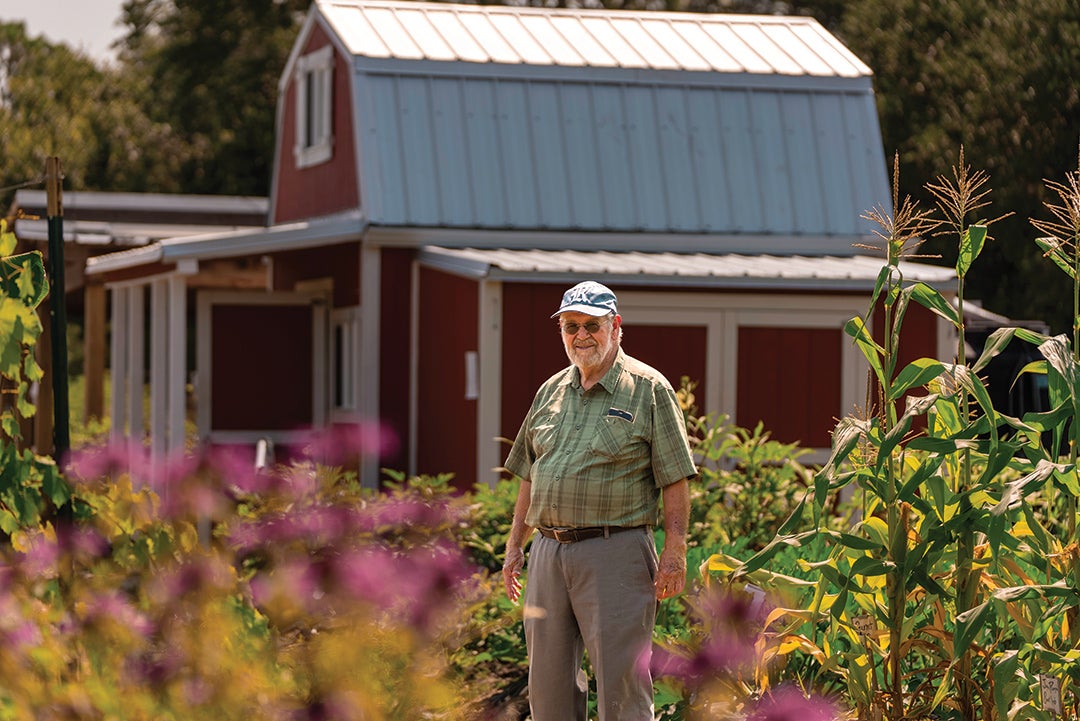
Fall 2023
By Autumn Horne '22 | Photos by Gustavo Raskosky
On a scorching July afternoon, student workers, staff and interns for Rice’s Betty and Jacob Friedman Holistic Garden gather around an outdoor table for their weekly “snack and share.” The meeting convenes as horticulturist Joe Novak, the garden’s founder and director, passes around dripping slices of melon. Juice running down his hands and off his wrists, he explains how recent patterns of heat and rain have shaped the flavor of the fruit everyone eats.
Next, the garden’s summer interns share updates on their research projects. One of the interns is Karis Williams, a sophomore interested in how native plants are incorporated into the garden. Williams can often be found working in the garden’s songbird habitat or beneficial insects garden, both a wild riot of colorful native plants. For her summer project, Williams is developing a system to harvest seeds from native plants, propagate them and then sell them through the garden’s market. People in the surrounding community will buy the plants for their own gardens, supporting native insects and animals in the process.
Junior Haaniya Mehrani, also a summer intern, wants to use the garden to educate the community on how to grow and prepare seasonal produce. Many gardeners don’t realize that because of Houston’s long warm season, they should be growing tropical greens six months out of the year. Tropical greens are not familiar to many Houstonians, but they’re nutritious, easy to grow and versatile to cook with. Mehrani helps cultivate lush beds of purslane, amaranth and water spinach, all well adapted to the heat of a Houston summer, and she educates locals on how to prepare them.
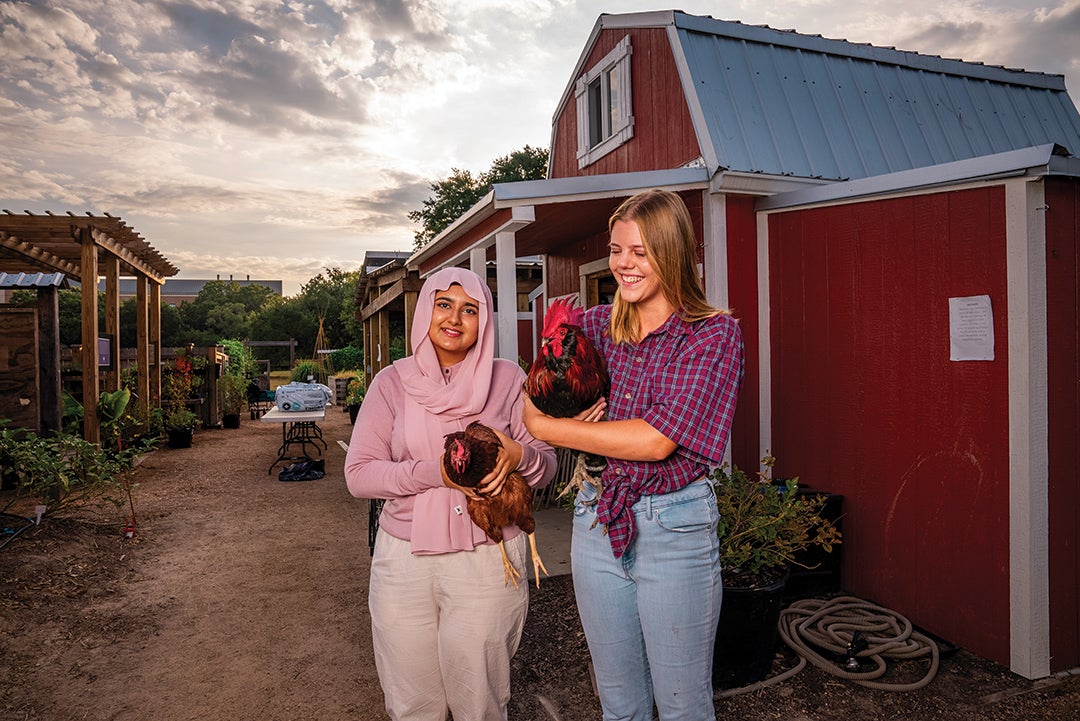
For students like Williams and Mehrani, the Friedman Holistic Garden is an experiential learning classroom like no other, but it is far more than that. Since its founding five years ago, the garden has provided valuable learning opportunities while also contributing to the health and wellness of the Rice community. The garden may have taken root as part of Rice’s Department of BioSciences, but those roots now spread far and wide across campus — into lecture halls, servery kitchens and even an art gallery.
Seeding an idea
In 2018, Novak and Janet Braam, then chair of Rice’s Department of BioSciences, received a grant from the Houston Jewish Community Foundation for a project to improve the health of Rice’s students. The Betty and Jacob Friedman Holistic Garden was born and soon expanded courtesy of a grant from the Green Mountain Energy Sun Club. In 2022, the garden was moved into its current location adjacent to the Gibbs Recreation and Wellness Center.
Covering just over one-third of an acre, it includes beds for fruits, vegetables and herbs, plus a greenhouse, outdoor kitchen, composting system, butterfly garden and apiary. The garden also contains a chicken coop for the uncontested stars of the garden, an unruly menagerie of chickens with names like Frizzle and Grommet.
The garden develops under the care of Novak, widely considered one of Texas’ leading horticulture experts, providing him the space to educate Rice students about urban agriculture and community gardening. Each semester, Novak teaches a course called Environmental Sustainability: The Design and Practice of Community Agriculture. When asked what students learn in his course, Novak sums it up by saying, “There’s an art and a science to gardening. We want to get the science in there as well as the art.”
Whichever their focus, students can expect to get their hands dirty. In Novak’s course, you don’t just memorize which pests attack which crops. Instead, you squat in the soil to determine whether the holes in the amaranth were caused by worms or beetles before you choose an appropriate control strategy. You don’t just read reports on how fresh vegetables are more nutritious than their processed counterparts. You pick your own vegetables, gather eggs from the chicken house, and learn to prepare a frittata in the garden’s outdoor kitchen. Rice bioscientist George Phillips ’74, ’76 helps teach this cooking lab every semester. He quips, “You’ve heard about farm to table. This is just a farm table.”
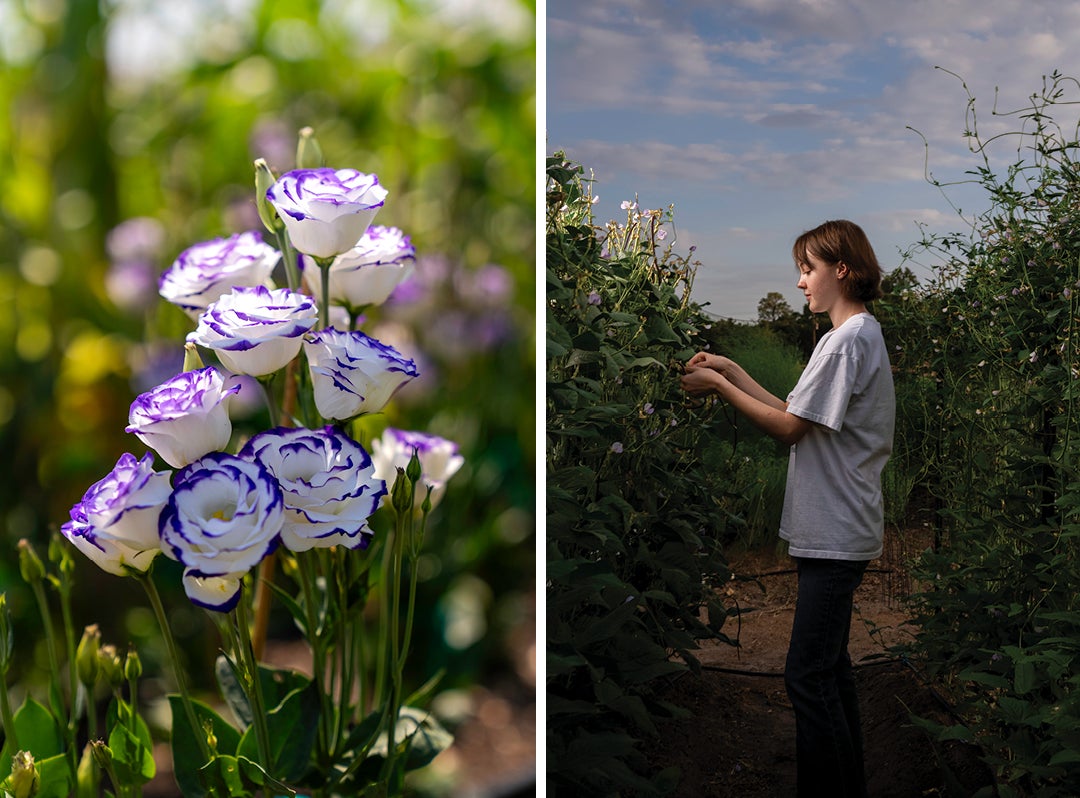
Curiosity in bloom
From the Department of BioSciences to the Department of English, many other courses deliver hands-on learning experiences in the garden. This summer, bioscientist Jamie Catanese ’05 and students in the Rice Emerging Scholars Program started a research project to solve a problem that affects gardens and farms worldwide: black rot, a destructive bacterial disease that infects vegetables like cabbage, broccoli, cauliflower, kale and kohlrabi. The most common management strategy is to till infected soil and wait for the bad bacteria to die off. The question is: How long should you wait?
Catanese and his students worked to develop a simple protocol for identifying whether bacteria that cause black rot are still present in soil. “I’ve always told them,” Catanese says, “we let the data drive it. We don’t have preconceived notions here. I don’t know the answer.”
To find the answer for themselves, students visited the garden to learn about black rot’s impact and management. Then, with samples from both infected and uninfected soil, they tested different methods for bursting open bad bacteria to release their DNA. They learned a technique called polymerase chain reaction to exponentially increase the amount of DNA in their samples, then sequenced the DNA to determine if bacteria causing black rot were still in the soil. The students may not have ended their summer with a definitive conclusion to send back to the garden, but, as Catanese assures them, sometimes that’s just how research goes.
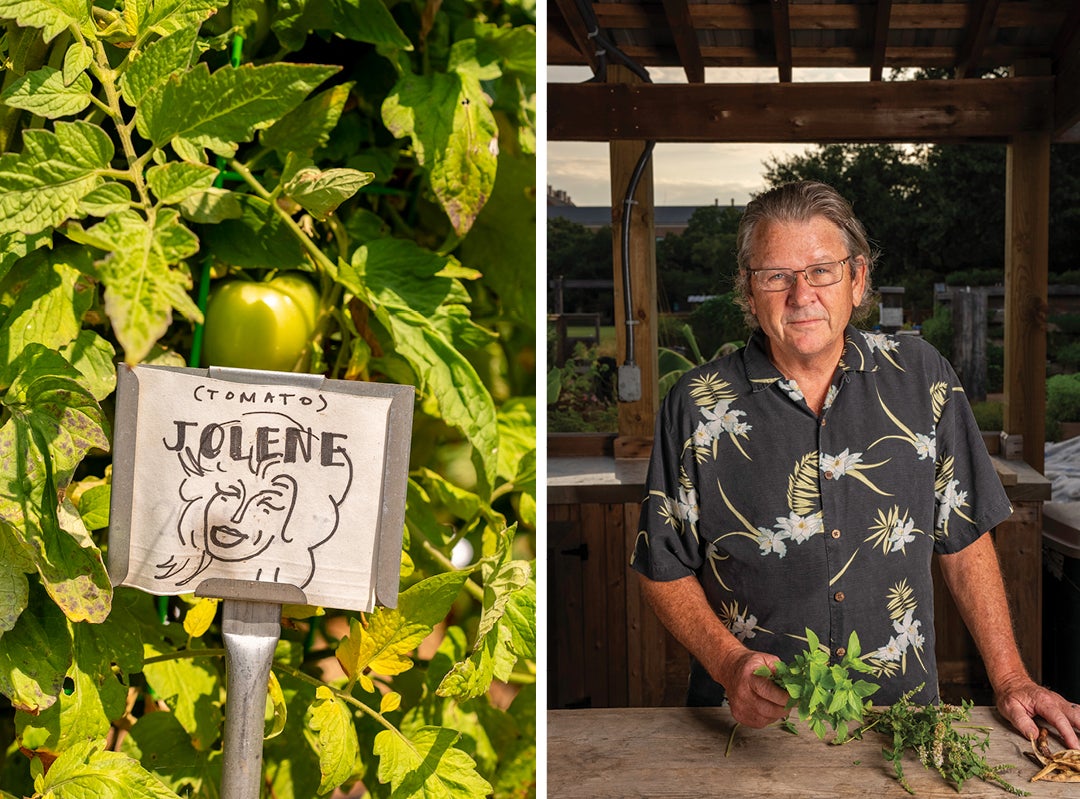
Cultivating wellness
The original mission of the Friedman Holistic Garden was to improve Rice students’ health by growing fresh produce for the campus serveries. Each month, the garden delivers over 300 pounds of seasonal produce to Rice’s chefs. Garden staff and volunteers harvest produce such as melons, tomatoes and eggplant at the peak of ripeness. The high-quality, nutritious ingredients are then prepared in dishes and served to students the very same day.
Rice’s chefs can also use the garden to grow exotic herbs and vegetables that aren’t typically available from their grocery suppliers. As the serveries become more internationally inspired, access to these ingredients makes dishes not only healthier but also more authentic.
The garden’s crop manager, Charles Flynn, will be the first to tell you that gardens improve more than just your physical health. Toweling the sweat off his face, Flynn describes how farming helps him cope with trauma from 10 years in the military. He began farming a little over a year ago while working as a data scientist. A company he wanted to work with preferred applicants with agricultural experience, and Flynn hoped farming would give him a competitive edge. As he spent time in the garden, he picked up skills in seeding, soil maintenance and pest management, but he also noticed his symptoms of PTSD easing.
That being in nature has profound effects on mental and emotional well-being doesn’t surprise Novak. He coined the term “sociohorticulture” to describe the social applications of agriculture. For years, Novak has been teaching students how farms and gardens can be therapeutic and provide innovative solutions to poverty, hunger and homelessness. But for Flynn, sociohorticulture is more than an idea. He left data science and never went back. These days, he spends most of his time in the garden, participating in its rhythms of growth and renewal. “Seeing these little lives grow and then pass, there’s no violence, there’s no anger, no raw emotions. Just simple life,” Flynn explains. “For folks who’ve had challenges in their lives, when there’s been a lot of trauma, a lot of violence, that’s simple. That’s beauty.”
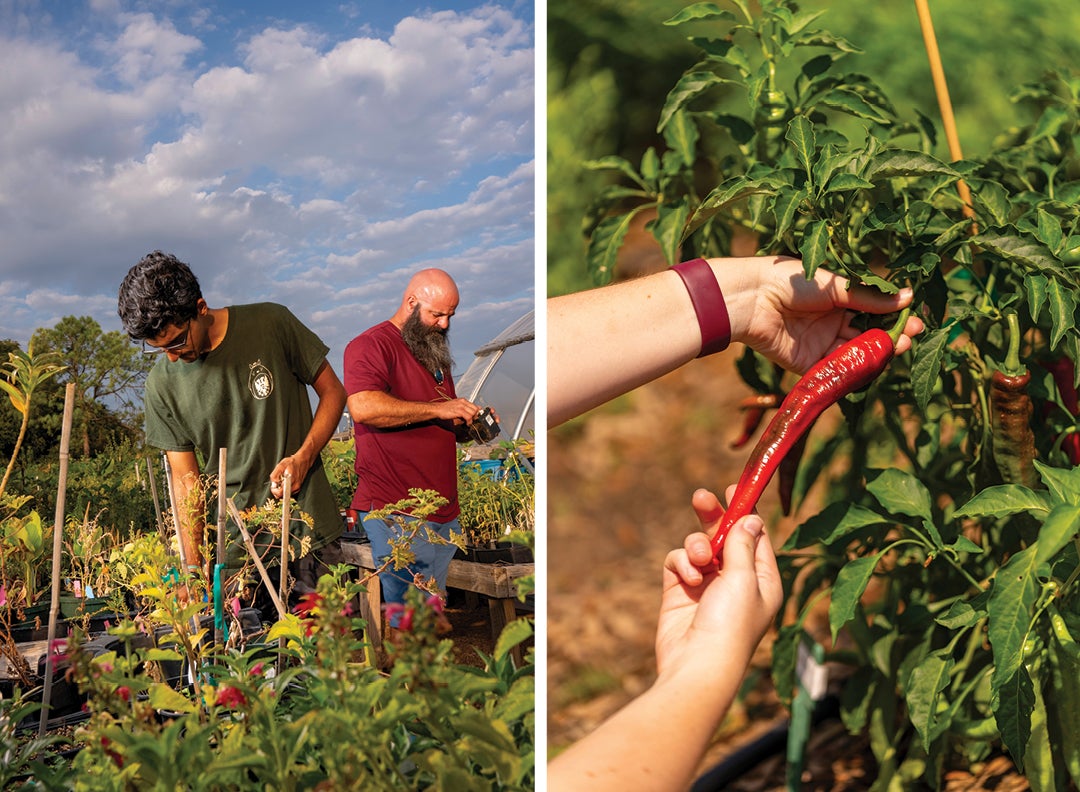
in the garden, is ready for harvest.
A harvest of stories
Much like its plants, the Friedman Holistic Garden is in a constant state of growth. Over the past year, the garden has explored creative and unexpected collaborations. In perhaps the most notable example, artist Bennie Flores Ansell, along with Rice students and the Moody Center for the Arts, worked with the garden to elevate stories of migration and explore how they might literally and figuratively create the ground we all stand on.
Over the spring semester, visitors to the Moody Center were invited to write or draw their stories of migration on compostable paper. On April 22, Earth Day, students migrated the stories in a procession from the Moody Center to the garden, where the papers and their stories were incorporated into compost. The stories will disintegrate until this fall, when people will return and use that same compost to nourish new plants. The folks at the garden hope more events like this one will bring the community together in a space for education and connection.
People who volunteer to pull weeds, learn from Novak, grab fresh produce from the communal fridge, or sweat through a harvest with Flynn rarely keep the experience to themselves — and for good reason. The ability to step out of the busyness of campus and into the Friedman Holistic Garden is a chance to cultivate our curiosity and care for ourselves as we also care for something, or someone, else. “We don’t want people to just ride by,” Flynn likes to say. “We want them to come in.”
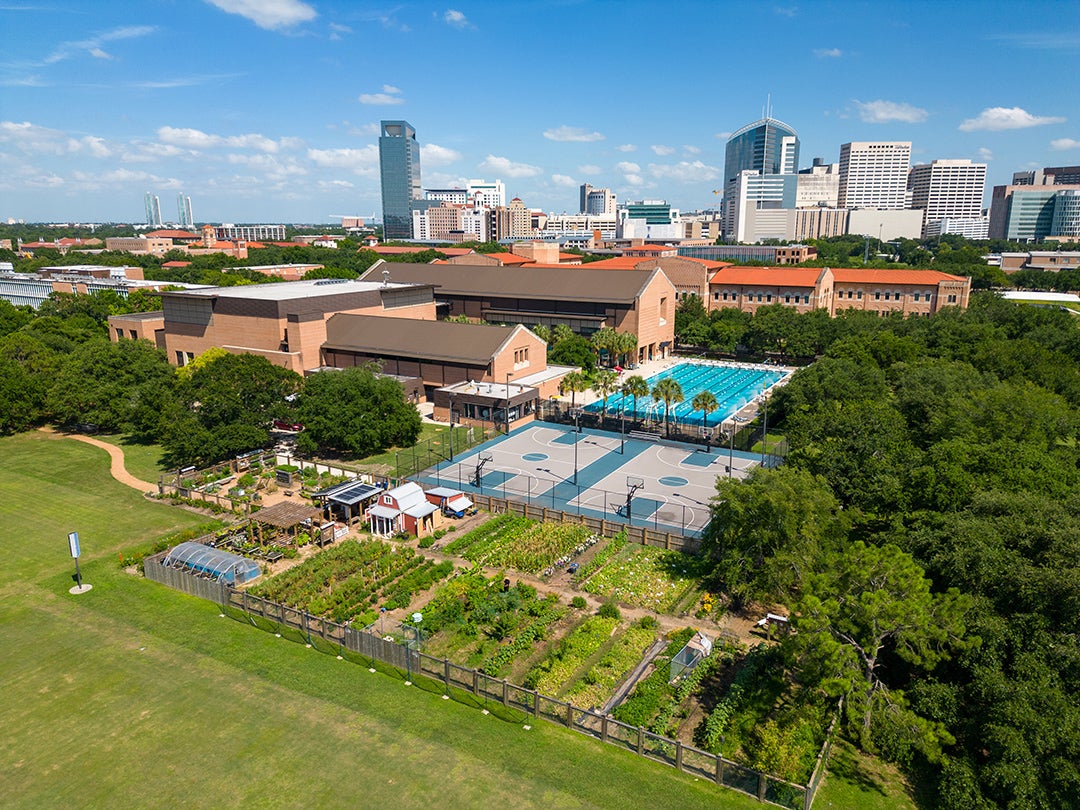
Janet Braam is Wiess Professor of BioSciences and associate dean for strategic initiatives.
George N. Phillips Jr. is Ralph and Dorothy Looney Professor of BioSciences, associate dean for research, and professor of chemistry.
Jamie Catanese is assistant teaching professor of biosciences.
